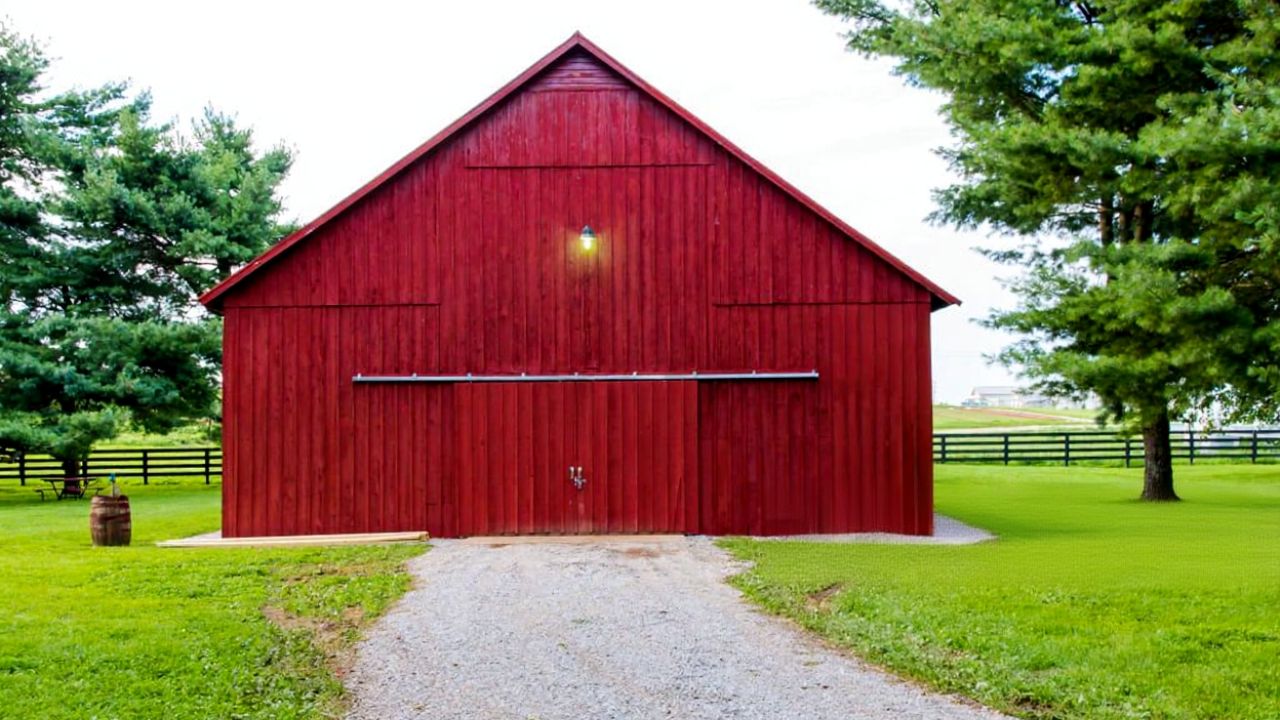What your barn placement on the land is saying about your setup
You know that spot where you parked your barn? It tells a story about how you run things on your property. If it’s tucked way back, out of sight from the road, that suggests you’re focused on privacy and maybe keeping operations low-key. But if it’s right up front, visible to everyone passing by, it shows you’re open, perhaps running a more community-facing farm or homestead.
Think about the land’s natural flow. Placing your barn on a slope can mean drainage issues if not done right, leading to muddy messes during rain. You’ve probably seen setups where the barn sits at the bottom of a hill, collecting water like a sponge. That’s a sign the owner didn’t plan for the terrain, and it can make daily chores a hassle.
Access and efficiency matter more than you think
When your barn is far from the house or main driveway, you’re adding extra steps to everything. Loading feed or tools becomes a trek, especially in bad weather. Position it closer to where you park vehicles, and suddenly tasks feel smoother. I’ve seen properties where the barn’s placement cuts down on time wasted walking back and forth.
Consider vehicle access too. If trucks can’t easily back up to the doors, you’re complicating deliveries. A well-placed barn has wide approaches, room for turning around, and maybe even a separate service road. That setup screams organized and thoughtful.
Wind and weather play into it
Your barn’s orientation affects how it handles elements. Facing the prevailing winds head-on can lead to drafts inside, making it uncomfortable for animals. Turn it sideways, and you reduce that issue. In areas with heavy snow, placing it where drifts pile up against doors means constant shoveling.
Sun exposure counts as well. A south-facing barn gets more natural light, which can help with ventilation and drying out after storms. If yours is shaded by trees or hills, it might stay damp longer, inviting mold or pests. Adjusting placement to catch the sun can change the whole environment inside.
Proximity to resources shapes daily life
Keep your barn near water sources, like a well or hydrant, to avoid hauling hoses across the yard. Electricity access is key too—running extension cords from the house is temporary at best. Plan for buried lines if possible, so power is reliable without tripping hazards.
Fencing ties in here. If the barn sits right against pastures, moving livestock in and out is straightforward. But if there’s a gap, you end up herding them farther, which wears on everyone. A connected setup shows you’ve thought about flow from field to shelter.
Safety signals in the layout
A barn too close to the house risks fire spreading if something goes wrong. Codes often require a buffer zone, but even without that, distance gives peace of mind. On the flip side, isolation can mean slower response times to issues like a sick animal at night.
Visibility from the house matters for security. If you can see the barn doors from your kitchen window, you’re more likely to spot problems early. Hidden placements might invite theft or wildlife intrusions without you noticing right away.
Expansion room reveals long-term thinking
If your barn crowds the property line, future additions like stalls or storage become tricky. Leave space around it, and you can grow as needed without major headaches. Properties with barns plopped in the middle often end up feeling cramped as operations expand.
Soil type under the barn affects stability. Building on clay might lead to shifting foundations over time, while gravel or well-drained dirt holds up better. Checking that before placement avoids costly fixes later.
Neighbor relations show in the spot
Placing your barn near shared fences can mean odors or noise bothering others. Set it back, and you maintain good vibes. In rural areas, this placement can signal respect for boundaries and community norms.
Aesthetic choices count too. A barn that blends with the landscape looks intentional, while one sticking out oddly suggests haste. Align it with natural features like tree lines for a cohesive feel.
Maintenance clues from the position
Easy access for repairs is huge. If the barn’s in a tight spot, getting equipment in for roof work or painting is tough. Open surroundings make upkeep simpler, showing a setup built for longevity.
Drainage around the base prevents erosion. A slight elevation keeps water away, reducing rot in wooden structures. Flat, low spots invite pooling, which wears down materials faster.
Animal comfort ties to location
For livestock, barn placement affects air quality. Too close to roads means dust and fumes; farther back provides cleaner breathing. Shade from nearby trees can cool it in summer, but avoid overgrowth that blocks ventilation.
Noise levels matter. A barn near busy areas might stress animals with constant sounds. Quieter spots promote calmer behavior and better health.
Like Fix It Homestead’s content? Be sure to follow us.
- I made Joanna Gaines’s Friendsgiving casserole and here is what I would keep
- Pump Shotguns That Jam the Moment You Actually Need Them
- The First 5 Things Guests Notice About Your Living Room at Christmas
- What Caliber Works Best for Groundhogs, Armadillos, and Other Digging Pests?
- Rifles worth keeping by the back door on any rural property
*This article was developed with AI-powered tools and has been carefully reviewed by our editors.







